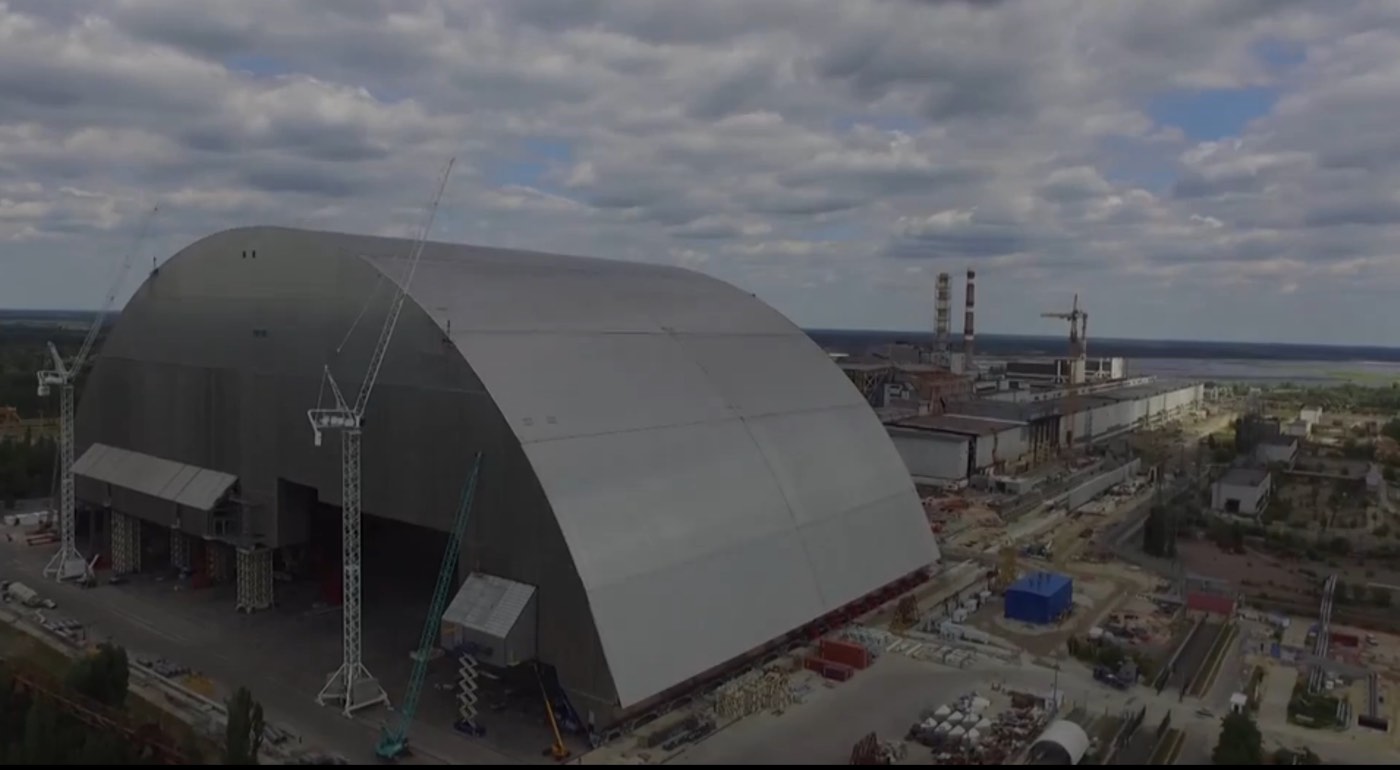Chernobyl Bubble: How a Giant Arch Will Seal Nuclear Site

To safely entomb the radioactive wreckage of Chernobyl, the site of the infamous 1986 nuclear accident, a mobile metal arch is now on the move that is taller than the Statue of Liberty. The giant arch, the largest man-made object ever to move on land, is now sliding over the ruins in Ukraine.
When nuclear reactor No. 4 exploded at the Chernobyl power plant in 1986 due to errors in both operation and design, it sent plumes of radioactive dust as far away as the United States and Japan, previous research found. To contain the fallout, the Soviet Union enclosed the ruins in a structure that is technically known as the Shelter Object but more commonly called the sarcophagus.
Although the sarcophagus is massive — consisting of more than 7,700 tons (7,000 metric tons) of metal and 14.1 million cubic feet (400,000 cubic meters) of concrete — this makeshift structure was never meant to last forever, according to the World Information Service on Energy (WISE). Instead, the structure was raised as quickly as possible to limit workers' exposure to radiation. Now, after standing for decades, the sarcophagus is in danger of collapse, according to the European Bank for Reconstruction and Development. [In Photos: Chernobyl, Frozen in Time]
For example, the hastily built sarcophagus has no welded or bolted joints, so it would not take much of a seismic event to knock it down, researchers have found. Moreover, there are many openings in its roof that allowed water in, resulting in corrosion that is hastening its demise, according to the European Bank for Reconstruction and Development.
To safely entomb the failing sarcophagus and its deadly contents, the French consortium Novarka started building a gargantuan replacement in 2012 — the New Safe Confinement, a steel structure 354 feet (108 meters) high at its tallest point, 531 feet (162 m) wide and 843 feet (257 m) long, and weighing more than 39,000 tons (36,000 metric tons). For comparison, the Statue of Liberty, from the ground to the tip of its torch, is about 305 feet (93 m) high.
Because the ruins of the reactor are still highly radioactive, to protect the workers building the New Safe Confinement, the titanic arch was not built over the sarcophagus. Instead, it was assembled a distance away from the reactor building, and 224 hydraulic jacks are now sliding it the total distance of about 1,070 feet (327 m) into place.
"The start of the sliding of the Arch over reactor 4 at the Chernobyl NPP [Nuclear Power Plant] is the beginning of the end of a 30-year-long fight with the consequences of the 1986 accident," Ostap Semerak, Ukraine's minister of ecology and natural resources, said in a statement.
Get the world’s most fascinating discoveries delivered straight to your inbox.
The arch is designed to last at least 100 years and is strong enough to withstand a tornado, according to the European Bank for Reconstruction and Development, which led the $1.6 billion project. Inside, robotic cranes will help dismantle the sarcophagus, while vacuum cleaners will suck up radioactive dust. Cameras will help workers remotely operate the tools, and the arch's ventilation system is designed to eliminate the risk of corrosion.
The arch began its slide on Nov. 14, and the entire operation is expected to take five days.
Follow Charles Q. Choi on Twitter @cqchoi. Follow us @livescience, Facebook & Google+. Original article on Live Science.




